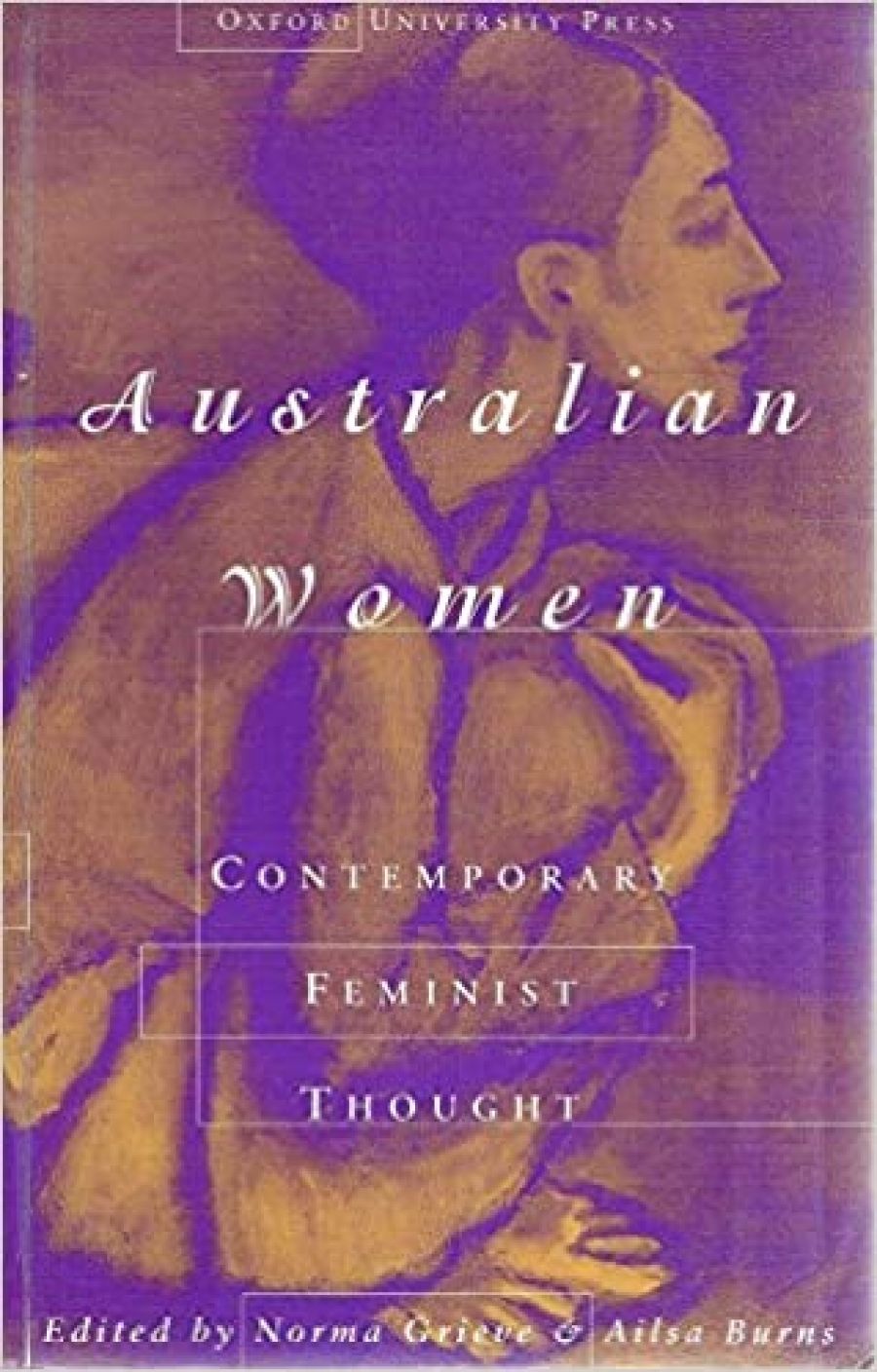
- Free Article: No
- Contents Category: Feminism
- Review Article: Yes
- Online Only: No
- Custom Highlight Text:
Feminism is one of the great, enduring intellectual movements of the twentieth century. This collection of essays, mainly by academics, examines how that movement has advanced to date and where it appears to be headed.
- Book 1 Title: Australian Women
- Book 1 Subtitle: Contemporary feminist thought
- Book 1 Biblio: OUP, $29.95 pb
A second more ‘rebellious’ wave of feminism, the Women’s Liberation Movement, occurred in the 1970s, coinciding with International Women’s Year, and the 1980s and 1990s have seen a more ‘self-determining’ phase.
Divided into three sections, the book covers historical tradition, examines current problems and challenges, and concludes with an overview of gains and losses.
The variety of views expressed helps place Australian feminists within a national framework and against the wider backdrop of the international stage. Many entitlements Australian women take for granted do not exist in the United States, where feminists seem unable to agree on a broad agenda, issues, or strategy. On the other hand, there are more women in European politics than in Australian.
Initially, the feminist movement clung to a concept of the universal ‘woman’, which anthropologists regarded as an oversimplification, given the enormous diversity in the meaning of ‘womanhood’ across cultures and over time.
As an example, Aboriginal women have felt discriminated against more on the grounds of race than gender. Traditionally not victims, they held a position of autonomy and were highly respected. They saw white women as colonisers, employers, welfare workers, missionaries, and general ‘do-gooders’. When white feminists were demanding the right to sexual freedom, contraception, and abortion, they were fighting sexual stereotypes that denigrated them, exploitation by white men, and unwanted sterilisation. In speaking for Aboriginal women, therefore, white feminists often ignored the role played by them or their forebears in racism and discrimination.
Ethnic and migrant women also maintain strong cultural and family ties which are integral to their lives, and don’t wish to be separated from these in order to serve a feminist ideology.
Strong reservations were expressed, too, on behalf of lesbian groups, who feel they have not been adequately represented by a heterosexual majority. They claim that for them to become part of a feminist movement the widely differing views found within the lesbian community should be accepted and integrated within a broader feminist tradition.
The editors are to be complimented on the number of views canvassed. The airing of such issues is crucial to the continuation of the movement as a viable force, emphasising the need for an alliance between groups together with a greater understanding of their concerns.
Essays dealing with the workforce expose other problems. The concept of neo-classical economics, based on the idea of the rational economic man, fails to address the needs of working women. Altruism is seen as an explanation for the family, yet self-interest is the reality in the marketplace. Although the sharing of domestic chores has improved, many women in full-time jobs do more than their share simply to avoid arguments. With the birth of a child, there is a ninety-one per cent increase in such chores.
Equal Employment Opportunity may exist in theory, but women still find themselves disadvantaged. The trade union movement needs women members, yet their ‘rights’ can disappear overnight and they are often in service industries where strike action is difficult: ‘It is one thing to stop a concrete pour – another to walk out of intensive care.’
More women are now entering the professions, although many remain in so-called ‘semi-professions’ as nurses, teachers, and secretaries. Those who enter medicine and law are often targets of envy, anger, and frustration from other women, yet still experience discrimination by men. Women doctors are expected to remain ‘lady doctors’ rather than specialise, male solicitors are reluctant to instruct female barristers.
The Law Reform Commission in Victoria has maintained that defence of provocation is not gender-biased, yet a survey of homicide cases would seem to suggest otherwise. Adultery when flaunted by a woman can be counted as provocation to a husband, perhaps reducing a murder sentence to one of manslaughter. However, in cases where there is a long history of violence, judges struggle to perceive this as provocation to a woman, let alone self-defence.
This is a comprehensive and worthwhile collection, with some fascinating insights into the problems faced by feminism today. It should prove a welcome and valuable addition to feminist literature.


Comments powered by CComment